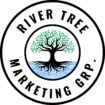How to Build and Optimize Your Website for More Leads in 2025
A well-designed and optimized website is the foundation of a successful digital marketing strategy. In 2025, your website is more than just an online business card—it’s a powerful tool for attracting, engaging, and converting visitors into customers. Here’s how to ensure your website is optimized for maximum lead generation.
1. Make a Strong First Impression
Your homepage is often the first interaction potential customers have with your business. It should immediately communicate who you are, what you do, and why visitors should choose you.
Key Elements of a Strong Homepage:
- Clear and compelling headline that highlights your unique value proposition.
- Easy navigation so visitors can find what they need quickly.
- Fast load time (Aim for under 3 seconds for optimal user experience).
- Mobile responsiveness to ensure usability across all devices.
2. Optimize for SEO (Search Engine Optimization)
SEO is critical for getting your website ranked on search engines like Google. Without proper SEO, your website may not be found by potential customers.
Essential SEO Practices:
- Keyword Research: Identify relevant keywords your audience is searching for.
- On-Page SEO: Optimize title tags, meta descriptions, and headers.
- Quality Content: Publish valuable, well-structured blog posts and service pages.
- Technical SEO: Improve site speed, ensure mobile-friendliness, and fix broken links.
3. Use High-Converting Calls-to-Action (CTAs)
A great website encourages visitors to take action. Whether it’s scheduling a call, signing up for a newsletter, or requesting a quote, your CTAs should be clear and compelling.
CTA Best Practices:
- Use action-driven language (e.g., “Get Your Free Quote,” “Schedule a Consultation”).
- Place CTAs above the fold and throughout the page.
- Offer an incentive (e.g., a free resource or discount) to encourage conversions.
4. Leverage Lead Capture Forms and Chatbots
Your website should make it easy for visitors to connect with you. Lead capture forms and AI-powered chatbots can help engage potential customers and collect valuable information.
Effective Lead Capture Strategies:
- Short and simple forms (ask for only necessary information).
- Live chat or AI chatbots to answer questions in real time.
- Exit-intent popups to capture leads before visitors leave the page.
5. Build Trust with Social Proof and Testimonials
Potential customers want reassurance before making a decision. Displaying trust signals can significantly increase conversions.
Ways to Build Trust:
- Client testimonials and case studies to showcase real success stories.
- Google Reviews and ratings to establish credibility.
- Logos of trusted partners or media mentions to validate your authority.
6. Ensure Mobile-Friendliness and Fast Loading Speeds
A slow or non-responsive website can drive potential customers away. With over 60% of web traffic coming from mobile devices, your site must perform seamlessly on all screen sizes.
Speed and Mobile Optimization Tips:
- Use Google’s PageSpeed Insights to analyze and improve performance.
- Optimize images and reduce unnecessary scripts to speed up load times.
- Implement a responsive design that adapts to different devices.
7. Track and Improve Performance with Analytics
You can’t improve what you don’t measure. Regularly monitoring website performance helps identify what’s working and where to optimize.
Essential Metrics to Track:
- Website traffic sources (organic, paid, social, etc.).
- Bounce rate (percentage of visitors who leave without engaging).
- Conversion rate (percentage of visitors who complete a desired action).
- User behavior through heatmaps and session recordings.
Final Thoughts
Your website is your most valuable online asset. By optimizing it for SEO, conversions, and user experience, you can attract more visitors and turn them into paying customers. Implement these strategies, track your progress, and continuously refine your approach to stay ahead in 2025.
